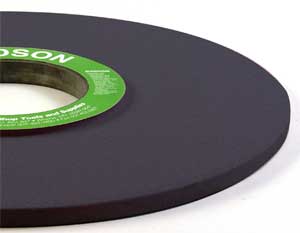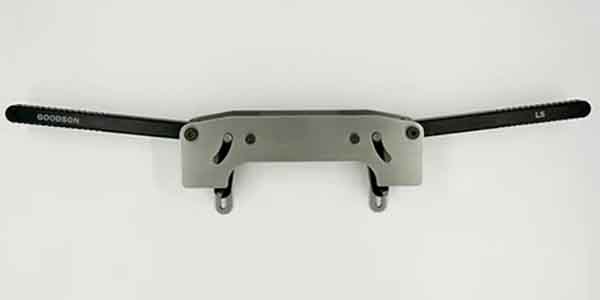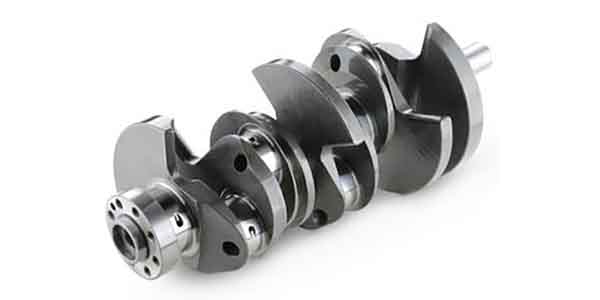Maintaining the crankshaft is one of the most important services that go into a complete engine rebuilding. But before mounting that grinding wheel on a crankshaft grinding machine, inspect it for cracks or damage. This can be done visually or by giving the wheel a “Ring Test.” A good vitrified wheel with no cracks will give a clear ringing tone when tapped with a wooden or plastic mallet. A cracked wheel gives off a dull sound which is quite different.
Maintaining the crankshaft and grinding it to correct specs is one of the most important services that go into a complete engine rebuilding.
But before you start the grinding process and operate your machine, there’s a few tips to consider.
First, before mounting that grinding wheel on a crankshaft grinding machine, inspect it for cracks or damage. This can be done visually or by giving the wheel a “Ring Test.” A good vitrified wheel with no cracks will give a clear ringing tone when tapped with a wooden or plastic mallet. A cracked wheel gives off a dull sound which is quite different.
Remember that every wheel is marked with its maximum operating speed in rpm. This rating must be checked against the actual rpm of the spindle which will drive the wheel. The spindle speed should be checked from time to time with a tachometer to be sure nothing has changed.
The following are additional tips from Goodson Tools:
PROBLEM: Wheel loading
Using an improper wheel is most likely to blame for metal particles lodging in abrasive grains or in wheel pores. Try using a wheel with a coarser grit or more open structure to provide chip clearance. Also try using more coolant. Faulty dressing could be another cause of wheel loading. Examine your diamond tool and replace it if it appears to be worn. A worn diamond will appear rounded. During the dressing process, a rounded diamond will roll some of the severed wheel back into its pores. This causes the wheel to become loaded, even before grinding. Also, check your coolant to make sure it’s not too concentrated. And, be sure to change dirty coolant.
PROBLEM: Wheel glazing
If your wheel looks shiny and feels slick, be sure that the wheel you are using is the right one for the application. You may need to choose a wheel with a coarser grit or softer grade. Or, you can try manipulating the wheel to get a softer grinding effect. Be sure to use a sharp diamond tool to dress the wheel. Turn the diamond 1/4 turn every fifth dressing. Use faster traverse and deeper penetration. The grinding operator should try using more in-feed, this should help deter wheel glazing.
PROBLEM: Fine spiral or thread on work
This is most likely caused by a faulty wheel dresser. Replace cracked diamond or reseat diamond. Try using a slower traverse speed. Rotate diamond every fifth dressing. Be sure that set screw on diamond is tight. Dress with less in-feed and do not allow the diamond to stop while in contact with the wheel. Make sure the you move the diamond evenly across the face of the wheel and re-radius the edges of the wheel.
PROBLEM: Tapered journal
Examine your grinding machine thoroughly. Correct worn ways and alignment of tail-stock and head-stock. Tighten their spindle bearings or replace worn out bearings. Re-level the machine. Check the dressing fixture for rigidity and examine the diamond itself. Try moving the point of the diamond closer to the fixture, but do not over-extend. Diamonds must be submerged in coolant continuously during dressing to maintain constant temperature. If the diamond’s shank is allowed to expand or contract with temperature change, taper will result.
PROBLEM: Chatter marks
Long, regular-spaced chatter marks that form a checkerboard pattern woould indicate that your wheel is out of balance. Re-balance the mounted wheel using th appropriate stand provided with the grinder. Remember to run the wheel without coolant to throw-off excess water to prevent water from settling at the lower edge of the wheel during storage. The wheel might also be out of round. To remedy this, true sides to face and rebalance. Regular-spaced chatter marks are usually caused by general vibration. Check for loose motor mounting bolts (head stock or wheel head) or a loose spindle pulley. Also check the balance of the motor. General chatter marks are typically due to faulty dressing. For best results, be sure to use a sharp diamond tool, rigidly held close to the wheel.
Source: www.goodson.com














